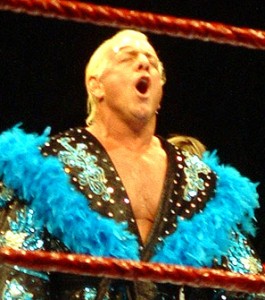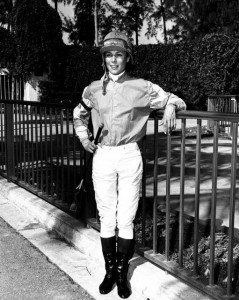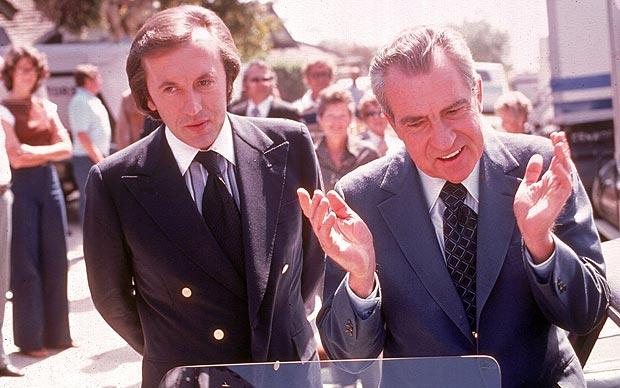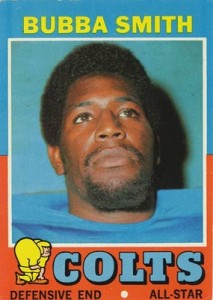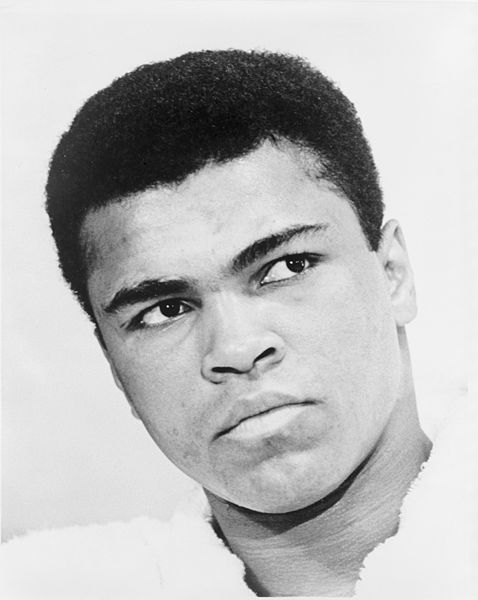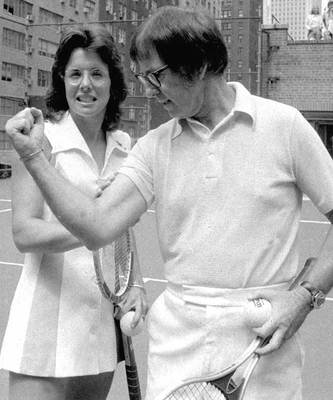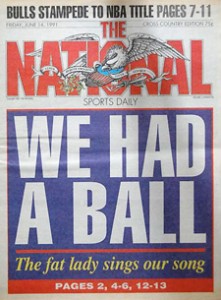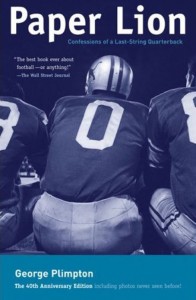Quite a time warp. I hate Star Wars with a passion, but, still, interesting.
You are currently browsing the archive for the Sports category.
Dick Cavett interviews Evel Knievel, 1971.
Another Evel Knievel post:
Tags: Dick Cavett, Evel Knievel
Dogged reporting by Shane Ryan on Grantland about Richard Fliehr, better known as professional wrestling legend Rc Flair, who is closing in on senior-citizen status and faltering badly into his dotage. Nixon didn’t get this level of scrutiny from Woodward and Bernstein. The sad story is obviously reminiscent of the great Darren Aronofsky-Mickey Rourke collaboration, The Wrestler. The opening:
“Ric Flair has been physically attacked by at least three of his four wives.
In a 2005 divorce case with Elizabeth Harrell — wife no. 2 — Flair’s lawyers detailed their accusations. “On more than one occasion,” they wrote, “Plaintiff (Beth) has assaulted the Defendant (Flair), striking him about the head and body in an effort to provoke him into a physical confrontation.”
In 2009, Flair filed a criminal complaint against Tiffany Vandemark — wife no. 3 — whom he accused of ‘hitting him in the face with a phone charger.’
And in 2010, Flair and his current wife, Jacqueline Beams, returned to their Charlotte, N.C., home after dinner at the Lodge Restaurant. There, for reasons never made explicit, Jacqueline punched him repeatedly in the face. She was arrested.
The story of Ric Flair was once about a college dropout who rose through the ranks of professional wrestling to become a legend. It was about his nickname, ‘The Nature Boy,’ and his signature figure four leglock, both lifted from an older wrestler named Buddy Rogers. It was about his multiple championships, his bleach-blond hair, his fast-talking patter (by his own reckoning, Flair was a ‘stylin’, profilin’, limousine-riding, jet-flying, kiss-stealing, wheelin’-n’-dealin’ son of a gun!’), and his signature, trademarked cry: ‘WOOO!’
Today the story is about a man known in the court system as Richard Morgan Fliehr, 62, born in 1949 and adopted by parents who raised him in Minnesota. That’s what he was called this past April, when a judge ejected Fliehr from his Charlotte home because he couldn’t pay his rent. That’s what he was called in May, when he faced an arrest order for an unpaid $35,000 loan. That’s what he’s called on the paychecks from Total Nonstop Action, a second-tier outfit where he’s still compelled to perform despite suffering from alcoholic cardiomyopathy, and where almost everything he earns goes toward old debts: lawyers, ex-wives, the IRS, former business partners, and anyone who made the mistake of lending him money.”
••••••••••
“Wherever I go, I never leave a lady without a smile on her face.”
“I’m an old broken down piece of meat”:
Tags: Ric Flair, Richard Fliehr, Shane Ryan
Jockey Robyn Smith’s remarkably quick journey from aspiring Hollywood starlet to respected professional athlete was the basis of a 1972 Sports Illustrated story by scribe Frank Deford. But her greatest fame was still in the distance, occurring by virtue of an unlikely 1980 marriage to legendary film dancer Fred Astaire. An excerpt from the SI profile of Smith, who was given to telling tall tales about herself:
As a kid she played boys’ games, and certainly jockeys don’t intimidate her because she is, after all, taller than everybody she rides against. “The men jockeys have treated me terrific,” she says, “but then, all my friends have always been men. I resented being called a tomboy, though, because I wouldn’t want to be a man. I like them too much. I just get along with them, period. Women resent this for some reason. My mother used to resent this. Like when she and my father would have people over, I’d hang around with the men.” Robyn always addresses married couples as “you guys.”
She exercises every morning, runs religiously, and indulges herself only in a little wine and brandy. She is a fine golfer, long off the tee, and picks up any sporting activity easily. Ransohoff, the film producer, took her deep-sea fishing. “We hit a school of albacore,” he says, “and I mean they were rolling. Robyn hung more albacore in that hour than any man on board.”
“I’m thin, but I’m strong,” Robyn explains clinically, getting set to flex again. “I always had good muscles. I’m a rare physical individual—and I’m not trying to be narcissistic about it. It’s just that I’m very unusual in that way.”
Yet Robyn has taken off so much weight that she appears to have no emotional reservoir to sustain her. Her system is littered with the residual effects of weight pills, water pills, hormone pills, big pills, little pills, pill pills that she gobbles indiscriminately. Even when she was a world-beater at the spring meeting, she was constantly at a temperamental flood tide. She breaks into tears regularly, not only over losing a race but, say, while watching some banal TV drama. The least aggravation unnerves her. People fall out of her favor upon the smallest alleged slight, only to return just as whimsically to her good graces. Her fetish for freedom borders now on mania; it is easier to schedule an appointment with the Dalai Lama than Robyn Smith. She has become less receptive to criticism, and woe to the most well-intentioned innocent who forgets and idly tells her the same thing twice.•
_______________________________
Smith profiled in 1985.
Tags: Frank Deford, Fred Astaire, Robyn Smith
David Frost interviews Muhammad Ali in 1974. Three years later the world was surprised when Frost whipped Nixon’s behind.
Tags: David Frost, Muhammad Ali
In the days before telegraph and Morse code let alone radio, information about events that occurred in Europe wouldn’t reach America for several days. Newspapers in New York came up with a solution–get a jump on the competition by having a clairvoyant tell them what happened. This could have been some sort of joke, but I don’t think so. An excerpt from a story in the April 19, 1860 Brooklyn Daily Eagle:
“The New York Daily News has been consulting a clairvoyant on the result of the Prize Fight which all suppose to have been fought by Heenan and Sayers on Monday, and says:
‘A clairvoyant in this city declares that one of the pugilists who yesterday fought for the championship of England has been killed. We have been unable to ascertain which; but the lady inclines to think it is the ‘larger man,’ whether as to the muscle or as to the pugilistic fame we know not. But she is positive one of them is killed. We are, therefore, all the more curious to know the result. It will affect either spiritual seeing or material hitting; which, a few days will tell. The old lady adds that the killed man is not the winner.”
Kudos to the folks at Open Culture for finding an archived Sports Illustrated article by William Faulkner, who reported on attending his first hockey game in 1955. An excerpt from “An Innocent at Rinkside“:
The vacant ice looked tired, though it shouldn’t have. They told him it had been put down only a few minutes ago following a basketball game, and after the hockey match it would be taken up again to make room for something else. But it looked not expectant but resigned, like the mirror simulating ice in the Christmas store window, not before the miniature fir trees and reindeer and cosy lamplit cottage were arranged upon it, but after they had been dismantled and cleared away.
Then it was filled with motion, speed. To the innocent, who had never seen it before, it seemed discorded and inconsequent, bizarre and paradoxical like the frantic darting of the weightless bugs which run on the surface of stagnant pools. Then it would break, coalesce through a kind of kaleidoscopic whirl like a child’s toy, into a pattern, a design almost beautiful, as if an inspired choreographer had drilled a willing and patient and hard-working troupe of dancers—a pattern, design which was trying to tell him something, say something to him urgent and important and true in that second before, already bulging with the motion and the speed, it began to disintegrate and dissolve.
Then he learned to find the puck and follow it. Then the individual players would emerge. They would not emerge like the sweating barehanded behemoths from the troglodyte mass of football, but instead as fluid and fast and effortless as rapier thrusts or lightning—Richard with something of the passionate glittering fatal alien quality of snakes, Geoffrion like an agile ruthless precocious boy who maybe couldn’t do anything else but then he didn’t need to; and others—the veteran Laprade, still with the know-how and the grace. But he had time too now, or rather time had him, and what remained was no longer expendable that recklessly, heedlessly, successfully; not enough of it left now to buy fresh passion and fresh triumph with.•
_________________________________
“Boom Boom” Geoffrion in his prime:
“Boom Boom” selling beer in 1985:
Another William Faulkner post:
Tags: A.J. Liebling, Bernie Geoffrion, Bill Ray, Boom Boom Geoffrion, William Faulkner
Ted Koppel reports about militaristic paintball games played by adults, in 1987.
Tags: Ted Koppel
If Salvador Dali and Whitey Ford could team up to shill for Braniff Airlines, why not Andy Warhol and Sonny Liston?
The opening of The Devil and Sonny Liston, Nick Tosches beautiful, bruising biography of the boxer, who died young and mysteriously: “The corpse was rolled over and lay face down on the metal slab. It was then that the coroner saw them; the copper-colored whipping welts, old and faint, like one might imagine those of a driven slave.
To say that Charles Liston had been a slave would be to render cheap metaphor of the life of a man. And yet those scars on his back were as nothing to deeper scars, the kind that no coroner could ever see, scars of a darkness far less imaginable than those from any lash. Charles Liston, the most formidable of men, the most unconquerable of heavyweight boxers, had been enslaved by the forces of that darkness: enslaved, conquered, and killed by them.
Born with dead man’s eyes, he had passed from the darkness of those scars on his back to the darkness of the criminal underworld, to a darkness beyond, a darkness whose final form was the last thing he ever saw.”
Tags: Andy Warhol, Nick Tosches, Sonny Liston
From Michael Weinreb’s Grantland postmortem of the larger-than-life existence of towering football player-Police Academy thespian Bubba Smith, who just passed away:
“Smith — who was found dead in his Los Angeles home yesterday, apparently of natural causes, at age 66 — wanted to follow his brother to Kansas, but they didn’t want another Smith brother there; he wanted to go to the University of Texas, but, like most southern schools in the early 1960s, they couldn’t take him. And so he went to East Lansing, having never really interacted with white society before. The first time he stood up to meet his white roommate, the roommate’s parents nearly fainted. It was not a utopian community — Smith and his teammates often had trouble finding an apartment to rent in town — but Bubba had an unmistakable charm. He reportedly joined a Jewish fraternity; he was voted the most popular student on campus, even as he tested the limits of authority. His senior year, according to Mike Celizic’s The Biggest Game of Them All, he drove an Oldsmobile with his name written in gold letters on the door, most likely paid for through the largesse of alumni and boosters. Occasionally, Bubba parked it in the university president’s space.”
••••••••••
Harvey Shine + Bubba Smith:
Tags: Bubba Smith, Michael Weinreb
Major League Baseball Commissioner Bud Selig believes that players may be trying to get around the ban on performance-enhancing drugs by ingesting–no kidding–deer antler spray, which is believed to contain some of the same muscle-building properties as steroids. From ESPN:
“MLB players have been issued a warning over the use of deer-antler spray, a substance administered under the tongue that includes a banned chemical known for its muscle-building and fat-cutting effects, SI.com has reported.
Players had felt free to use the spray at nearly no risk until the warning was sent last week by the league, the report said.
In its warning, issued in reaction to reports from the drug-testing industry, MLB requested players not use the spray because it contained ‘potentially contaminated nutritional supplements’ and had been added to the league’s cautionary list of products.”
••••••••••
Dingers:
Tags: Bid Selig
This classic undated picture captures Jack Dempsey and Harry Houdini engaged in a mock fight for a photo op. Even though its tangential to this photo, I’ve been eager for awhile to share an insane 1930 New York Times obituary of a colorful character nicknamed “John the Barber,” who was Dempsey’s first manager. An excerpt from “Jack Dempsey’s First Manager Succumbs To Infection Of His Finger”:
“‘John the Barber,’ in private life John J. Reisler, known on Broadway for many years as a barber, fight manager and friend of the street’s great and near-great, died yesterday morning in Lebanon Hospital, the Bronx, of an infection caused by an ingrown hair on his finger. He had been in the hospital for three weeks and was surrounded by his family, including his wife, Mrs. Minnie Reisler, with whom he had been reconciled recently after a long separation. He was 53 years old.
Also at the bedside was Morris Reisler, his son, whose sentence of twenty years to life in 1923 was commuted by Governor Roosevelt last March. Morris had been sent to Sing Sing for killing his aunt, Miss Bertha Katz, whose death climaxed a family feud in which Mrs. Reisler had accused Miss Katz, her younger sister, of stealing Reisler’s affections. When Morris was released his father, whom he had seen in 1927 when he was permitted to visit the elder Reisler, who lay ill in a Bronx hospital, met him at the prison gate and escorted him back to New York.
As a prizefight manager Reisler was one of Jack Dempsey’s first managers. That was in 1915 and 1916. Although the two parted and later Reisler sued Dempsey for breach of contract, he always was proud of having known and handled Demspey in the days before he was champion.
Born in Austria, he came to New York as a young boy. He became a barber, and in that capacity shaved some of the best-known chins on Broadway. He ran several athletic clubs at various times and knew many celebrities. One of his latest fighters was Vincent Serici. Recently he had handled his three boxing sons, Johnny, Georgie and Sid.
Reisler first came into prominence, however, in 1912, when Herman Rosenthal, the gambler, was murdered early on the morning of July 16 in front of the Hotel Metropole, in Forty-third Street, east of Broadway. Reisler was one of the first on the scene, and it reached the ears of District Attorney Charles S. Whitman that he had seen something. He was subpoenaed, and told Mr. Whitman that has had seen ‘Bridgey’ Webber, one of those accused of the murder, running from the scene.
Put on the stand at Coroner Feinberg’s hearing, Reisler, who had known for years Rosenthal, Webber and others involved in the affair, recanted his story. He was fearful that gunmen in the crowd would ‘put him on the spot.’ Mr. Whitman had him arrested for perjury and after a night in a cell he decided to tell his original story. Webber, who turned informer, was freed later, as was Reisler, after his testimony. Police Lieutenant Charles A. Becker and four gunmen, ‘Gyp the Blood’ Horowitz, ‘Lefty Louie’ Rosenberg, ‘Whitey’ Lewis and ‘Dago Frank’ Cirofici, went to the electric chair for the crime.”
••••••••••
Young Dempsey demolishes a washed-up Jess Willard in 1919:
Related post:
Tags: Harry Houdni, Jack Dempsey, John J. Reisler
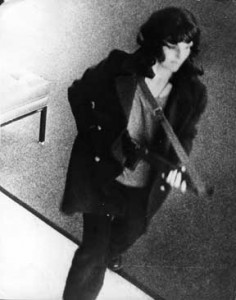
"Hunter insisted on meeting an imprisoned Hearst, the granddaughter of newspaper publisher William Randolph Hearst."
On Grantland, Jonathan Abrams profiles current NBA players’ union executive director Billy Hunter, who enjoyed a fascinating legal career even before being at loggerheads with league commisioner David Stern:
“President Jimmy Carter appointed Hunter as the U.S. Attorney for Northern California in 1977. He was one of the youngest lawyers to ever hold the position and became entangled in several historic moments. He brought the first major federal cases against the Hells Angels and Black Panther Party.
Hunter also prosecuted the surviving members who aided Jim Jones’ cult after the mass suicide of more than 900 people in Jonestown, Guyana, in 1978. Hunter visited Jonestown following the assassination of U.S. Rep. Leo Ryan.
‘We got there just on the eve of the Guyanese Army evacuating all the bodies,’ Hunter said. ‘The bodies had blown up because of the heat and all the bodies up there. It’s hot as hell there.’
Hunter also recommended Patty Hearst’s sentence be commuted and visited Hearst while she was imprisoned. At first, Hunter perceived that his bosses simply wanted him to sign off on the decision. Hunter insisted on meeting an imprisoned Hearst, the granddaughter of newspaper publisher William Randolph Hearst, who was first kidnapped by the Symbionese Liberation Army and later sympathized with the militant group.
They talked about life, and Hunter noted the irony of how he, a poor kid from New Jersey, was holding the key to the freedom of one of the country’s most wealthy heiresses. At the end of the three-hour conversation, Hearst plainly asked Hunter of his intentions. ‘I told her that I would recommend getting her out of here.'”
••••••••••
The SLA has a gunfight with the LAPD the year before Hearst’s arrest:
Tags: Billy Hunter, Patty Hearst
Horse trainers in the nineteenth century would try to win races by hook or by crook, even if it involved giving cocaine to their steeds or attaching electric currents to spurs and saddles. An inside look at the tricks of the trade was provided by an article in the December 18, 1900 edition of the Brooklyn Daily Eagle. An excerpt:
“The use of drugs, opiates or mechanical appliances to accelerate or deaden the speed of horses has been a common practice on our race tracks for many years, but in England these practices were totally unknown until the advent of the American trainer, who brought with him the modern methods. So, it is little wonder that our English cousins threw up their hands in amazement when they saw the sudden improvement worked by the mysterious methods of the Yankees. Ordinary selling platers of the commonest types became good handicap horses, while those of the latter division suddenly blossomed forth as stake horses. For a time they marveled. Then they began to suspect that the sudden improvement was due to other than ordinary training methods. While admitting that the superiority of the American style of riding had some bearing on this change of form, the Englishmen could not comprehend how horses purchased at a small price–horses which had never shown enough speed to get out of their own way–in the hands of the American trainers, developed wonderful speed, while these same horses, when sold by the shrewd Americans for a fancy price, as rapidly deteriorated to their pristine form and became utterly unable to win purses.
It is related that one inquisitive English trainer asked Lester Rieff one day at Newmarket what Wishard gave his horses to cause them to break away from the post so quickly and get into their stride at the very beginning of the race. ‘Feed them on pineapples,’ replied the jockey, confidingly. The trainer at once put his horses on a pineapple diet, with the result that he very nearly ruined his whole string.
The prevailing opinion that it is necessary for a jockey to pull his horse in order to lose a race is an entirely erroneous one. To the astute trainer there are a legion of ways by which he can increase or diminish the speed of a horse, and that without fear of detection. Ever since the shrewd American trainer began to cast about him for means by which he might gain an advantage over his rivals, the use of electricity has played an important part. The first known use of an electric battery in racing was with a mare named Marie Lovell, at the Gloucester track, over a decade ago. The battery used was the invention of a man named Tobin and was a rather primitive affair. It consisted of a leather belt, strapped around the jockey’s body, next to the skin, and containing eight cells, four on a side, and located under the armpits. Insulated wires ran down the inside of the boot and connected with the spurs. The horse above mentioned was at long price in the betting and won easily, to the great surprise of all those who were not in the game.
This battery was operated throughout the season without detection, one of its greatest successes being pulled off on the mare Gyda, at Guttenberg. This horse was at 100 to 1 in the betting and won handily. Before the race, the report was circulated that Gyda had run away, collided with an ice wagon and injured herself badly. In consequence of this report, and despite some desultory play on the mare, her price remained at the same high figure. The promoters of the scheme cleaned up at a fat winning on her race.
There were soon many improvements on the old body battery, the saddle battery attaining the most success. In this, the cells were concealed in the under part of the saddle. The wires ran down the stirrup leathers and connected with the stirrup irons. A steel plate, under the instep of the jockey, made the connection with the spurs. From this style of battery a very powerful flow of electricity could be obtained and it proved particularly magical in its effect on sulkers.
Another form of electric battery was concealed in the boot; another in the pockets, where the lead pads were kept, while still another was held in the hand and thrown away after the jockey had won the race and before he returned to the scales. Then there was the whip battery, which caused the horses to swerve badly, and was never a success.
After a time, it became extremely difficult to use an electric apparatus without fear of detection. The use of drugs, either hypodermically injected into the veins or else administered in a capsule, then came in vogue. Cocaine and other stimulating drugs were used and drenching, which consists of giving a horse exhilarating and courage-increasing drugs in a liquid form, also came into practice. On the outlaw tracks fully one-half the horses became ‘dope’ horses.”
•••••••••
Horse racing in 1897 at Sheepshead Bay, Brooklyn:
From a 1969 Life piece about the interlocutor Oriana Fallaci, who recalls introducing a young Muhammad Ali to her aggressive interviewing style:
“Question:
Has anyone actually threatened to break your nose off for something you wrote?
Oriana Fallaci:
Something like it happened with Cassius Clay. I had seen him a couple of times, and I went back to his house in Miami to finish the interview. He was eating a melon. I said, Good Morning, Mr. Clay. He keeps on eating the melon and suddenly belches very loud. I think he is just being impolite and I sit down with my tape recorder. And then oooaaagh. He belches again. A big one. Well, I said, let’s go on anyway. And just at that moment, buurp, buurp, whoops, whoops. I turned to him and shouted, I am not going to stay with an animal like you. And I was undoing my recorder, when he took the microphone and threw it against the wall. My microphone! I saw it flying past my head and I took my fists and bam, bam. Went against him. He stood there. So enormous. So tall. And he watched me in a way an elephant watches a mosquito. Black Muslims suddenly came out of all the doors into the room. Evil. Evil. They began to chant. You came for evil. It was like a nightmare. I backed out to my cab, trying to keep my dignity, but really afraid, and went straight to the airport. After the interview was published, Cassius Clay said he was going to break my nose if he ever saw me again. I said, we’ll see, if he breaks my nose, he is going to jail and we will have beautiful news in the papers. I saw him later in New York. I passed with my nose in the air, and he went by without looking at me.”
Tags: Cassius Clay, Muhammad Ali, Oriana Fallaci
Bobby Riggs, that huckster, profiled by Mike Wallace in 1973 for 60 Minutes prior to facing Billie Jean King in the Battle of the Sexes.
King and Riggs shill together for Sunbeam’s Mist-Stick Curler Dryer:
Tags: Bille Jean King, Bobby Riggs, Mike Wallace

"It was a tightly contested match against a local dentist, whose practice was suspended temporarily because of 'abject filthy conditions'"
WHY DID MY PARTNER TURN AGAINST ME? (OSCAR’S PATIO CAFE)
I often play golf with a younger, left handed, single digit player for whom I have great admiration. Yesterday, I was playing my heart out for my partner who was struggling a little bit in the early going. It was a tightly contested match against a local dentist, whose practice was suspended temporarily because of ” abject filthy conditions” and a psychotically competetitive masseuseur who pretends to be a “physical therapist”. On the eighth hole, a par three, i hit my tee shot into the hedges. Chopped out into the sand. then bladed a wedge to the other side of the green where the ball rested against the collar. My partner was lying one just off the green. Even though he knew I was disgusted and a little out of breath (suffering from a chest cold), he expected me to run across the green and putt so he could see the line. I was incredulous since his putt was not that difficult. I walked to my ball but before I could hit, he flubbled a chip or putt leaving it woefully short. Long story short, he three putt. the other team got up and down for par and we lost the hole. My partner was furious with me because I “rushed” him. Later in the match, he tried to get me to hit the wrong ball (we have a judge/member who has perfected this trick) and also bullied me on a tee box on 15 and made me bury my drive in fairway bunker. I think he was showing off for the young caddy who was stroking him for 18 holes. I don’t think he craves cock, but he has a friend (initials: OJ) who does. what should I do?
Former major leaguer Bernie Williams played a beautiful rendition of the National Anthem on guitar over the weekend in Phoenix for the minor league Futures Game. The first time an American artist played a personal version of the Star-Spangled Banner, before Hendrix or Gaye or anyone, it was also at a baseball game. At the 1966 World Series in Detroit, Joes Feliciano turned out a gorgeous, touching take on the song–and his career was nearly ruined.
••••••••••
Jose Feliciano has no idea at the time that his reading of the National Anthem will cause a furor in Vietnam-era America:
The full version of Feliciano’s soulful 1968 song:
Tags: Bernie Willaims, Jose Feliciano
One of the strangest chapters in baseball history took place during the early ’70s when Yankee pitchers Fritz Peterson and Mike Kekich swapped families–wives, children and dogs. The episode has been revisited recently because Ben Affleck and Matt Damon are trying to make a movie about the tabloid-ready trade. An excerpt from the March 5, 1973 Toledo Blade:
Teammates Fritz Peterson and Mike Kekich of the New York Yankees have “traded lives” through a mutual agreement that calls for the pitchers to exchange wives and families.
“It was not a wife swap,” said Peterson, “but a life swap.”
The situation developed last summer when the Petersons, Fritz and wife, Marilyn, and the Kekiches, Mike and his wife, Susanne, were drawn together and began discussing the possibility of an exchange.
‘There have been laughs, screams and tears throughout this whole thing,’ said Kekich.
Marilyn “Chip” Peterson and her two sons, Greg 5 1/2, and Eric, 2 1/2, changed places with Susan Kekich and her two daughters, Kristen, 6, and Reagan Leigh, 2 1/2. The arrangement apparently has worked for Peterson and Mrs. Kekich who are still together, but not for Kekich and Mrs. Peterson, who have separated.
In Rockford, Ill., Mrs. Arthur Monks, Marilyn Peterson’s mother, said: “Marilyn is not happy about this at all. She has started proceedings for a divorce, but only because he (Fritz) wanted her to. Mike Kekich has made no plans for a divorce.”
“Susanne was a perfect person for me,” said Peterson. “We will file for divorce in New Jersey under the no fault clause.”
“Pete and Susanne are great for each other,” said Kekich.
“I thought Chip and I were perfectly suited but things developed and we began to butt heads. She would have been the first of her family to get a divorce. It became too much for her and she began to worry.”
The two families switched places at the end of last season and then briefly returned to their original situations. After about 10 days they exchanged places again, this time permanently.
“The point of no return was reached December 14,” said Peterson. “Marilyn and our boys flew West to join Mike in California and Susan and the girls flew East to me. They must have passed mid-air.
“This was the biggest decision of my life,” he continued. “I’m not going back. I can’t go back.”
Peterson and Kekich have been Yankee teammates for four years and the two families have always been close.
When the exchange developed the two players advised the Yankees of the situation and General Manager Lee McPhail asked if they felt they could still function as teammates. They said they did and that satisfied the club.
“The players personal lives are their own,” said Manager Ralph Houk.•
Willie McCovey hits a frozen rope against Peterson at the 1970 All-Star Game.
Tags: Fritz Peterson, Mike Kekich
The tennis player Renée Richards caused a sensation in 1976 when she revealed that she had been born a man and undergone a sex-change operation. She was quickly lambasted by critics who thought she had an unfair advantage over her female opponents, but it seemed like an excuse to unload on someone who made much of America uncomfortable. Michael Weinreb of Grantland has a smart new interview with Richards, who is today a septuagenarian Manhattan opthamologist conflicted about being a public figure. An excerpt:
“‘No, no, no, no,’ she says now, at age 76, sitting in her cozy examining room. Her voice is a rasp; her sweater is pink. She is surrounded by autographed photos of Martina Navratilova and Virginia Wade. ‘That was not my intention. It’s not so much the idea that I wanted to be a pioneer and a standard-bearer. It was a much more selfish reason. I’d gone through such an upheaval in my life, and they’re telling me I can’t play tennis? Suddenly I said to myself, ‘I can do anything any other woman is entitled to do. How dare they?’
‘I was a quiet person. I mean, I’m not a shrinking violet, but I was a very private person. I was very well-liked, and I was very well-respected. And a lot of that was thrown away because I became a caricature, a public notorious figure. I was undressed in front of the world.'”
••••••••••
A new documentary about Richards:
The opening of the September 6, 1976 Sports Illustrated article about the Richards revelation: “At first, it seemed like a put-on. A transsexual tennis player? A 6’2” former football end in frilly panties and gold hoop earrings pounding serves past defenseless girls? A 42-year-old Yale graduate, Navy veteran, devoted father and respected eye surgeon reaching the semifinals of the $60,000 Tennis Week Open in South Orange, N.J. and demanding to play in the U.S. Open at Forest Hills? In women’s singles? Who ever heard of such a thing?
In the past month, practically everyone. And certainly last week there was no escaping the extraordinary spectacle of Renee Richards, nee Richard Raskind, and her assertion that ‘anatomically, functionally, socially, emotionally and legally I am a female.’ While conceding that her action might be ‘mind-boggling,’ Richards proclaims that she is embarked on a crusade for human rights, a quest ‘to prove that transsexuals as well as other persons who are fighting social stigmas can hold their heads up high.’
If tennis seems a rather fragile or inappropriate vehicle for carrying such a weighty message, it nonetheless provides, as Richards is well aware, the kind of exposure that attracts disciples. After one match last week, Dr. Roberto Granato, the urologist who performed the ‘sex-reassignment operation’ on Richards a year ago, rushed onto the court, embraced his former patient and exclaimed, ‘Oh, Renee, this is going to help so many people!’
Not everyone is so enthralled.”
Tags: Michael Weinreb, Renée Richards
Russia, baby. (Thanks Reddit.)
Grantland, Bill Simmons’ new online venture, has a fun oral history about the The National Sports Daily, a star-making and star-crossed newspaper edited by Frank Deford that burned brightly and burned out too soon in the early ’90s. An excerpt about how a Mexican billionaire started the paper on a whim:
“Frank Deford (Editor-in-Chief): I had never heard of Emilio Azcárraga. Very few people had, despite that he was the richest man south of the Rio Grande.
Thom Potraz (Marketing Director): If you went to central casting and asked for a “Mexican Billionaire,” they’d give you Azcárraga.
Dave Kindred (Associate Editor; National Columnist): They called him … El Tigre.
Peter Price (Publisher): It all started in the spring of 1989. Azcárraga wanted to have lunch. I’d heard about Emilio from Televisa, the Mexican media conglomerate, because I was in the media business, as well. I’d become publisher of the New York Post when Peter Kalikow bought the paper from Rupert Murdoch for $37 million. When I took over in 1988, there was a strike going, the circulation had plummeted, and the advertising had disappeared. We had the challenge of rebuilding. At lunch, Azcárraga started one of the strangest conversations of my life.
Emilio Azcárraga (Died in 1997. Lunch conversation recalled by Price): I read a comment of yours that the Post is unique among all American dailies in that it has many more male readers than female readers. You attributed that to the fact that the Post was a newspaper for women and a sports paper for men.
Price: The ladies like our gossip; the guys read it backwards and hardly ever get to the front of the newspaper.
Azcárraga: That’s what I want to talk to you about! Why is it that the most developed country in the world doesn’t have a daily sports newspaper? We’ve got one in Mexico. The Italians have two. The Brits have tabloid sports papers. L’equipe in France is reigning strong, and Japan has a sports paper.
Price: There are only three national newspapers in the United States, and only one is a purely national paper with genuinely national distribution. But USA Today is going on almost a decade, a billion dollars in losses, and it’s supported by a major publishing company. To do a national sports paper from scratch without the backing of a major publishing enterprise, without having a delivery system, without having regional printing plants, without having a brand name, and without any staff is not for the fainthearted.
Azcárraga: I think it’s a good idea. What would it take? Why don’t you give that some thought and come down and visit me? I’ll send my plane.”
••••••••••
Deford, Roger Angell and George Will discuss baseball’s home-run explosion in 1998 with Charlie Rose, whose head resembles a catcher’s mitt:
Another Frank Deford post:
Tags: Bill Simmons, Frank Deford
I interviewed George Plimpton shortly before his death, though I accept no blame for his demise. In 1966, the journalist, editor, party maven and prankster scored one of his greatest successes with Paper Lion, a sports book about trying out for third-string quarterback for the Detroit Lions. The other players weren’t in on the lark, though they soon came to realize the 36-year-old rookie was better at throwing back martinis than throwing tight spirals. The book grew out of “Zero of the Lions,” the author’s famous 1964 Sports Illustrated article. An excerpt from that piece:
“I looked for my helmet, relieved to see it lying in the grass a few yards away. My impulse was to put it on. From the beginning I’d had trouble getting into the helmet. The procedure was to stick the thumbs in the helmet’s ear holes and stretch the helmet out as it came down over the head—a matter of lateral pull, and easy enough if you practiced isometrics, but I never had the strength to get my ears quite clear, so they were bent double inside the helmet once it was on. I would work a finger up inside to get the cars upright again, a painful procedure, and noisy, the sounds sharp in the confines of the hard shell of the helmet as I twisted and murmured until it was done, the ears ringing softly. Then quiet would settle in the helmet, and I would look out beyond the bars of the nose guard—the ‘cage,’ the players call it—to see what was going on outside, my eyes still watering slightly. It was even more difficult to get the helmet off. The first helmet Friday Macklem had given me was too small—a helmet is supposed to fit snugly to afford the best protection—and when I tried it on in front of my locker I yelled as it came down over my ears. Wayne Walker, the big linebacker, happened to be chatting with me at the time.
‘How’d she feel?’
‘Feels fine. Snug,’ I said. ‘Once you get the thing on.’
I tried to take it off. I got my thumbs in the ear holes and tried to budge the helmet loose.
‘I’m stuck in here,’ I said, simply.
Walker began to grin. He looked down the locker room aisle for other players who would have enjoyed the dilemma. Mercifully, none were on hand.
‘Damn!’ I said. ‘I can’t budge this thing.'”
••••••••••
Plimpton parlayed his Paper Lion success into Oldsmobile Vista Cruiser ads:
Tags: George Plimpton
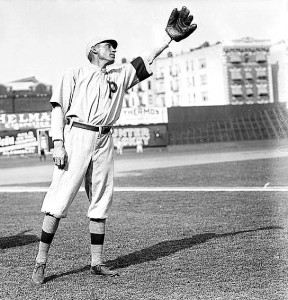 Some people can sense earlier than others that something is being done incorrectly, that methods are amiss, that the whole thing is a sham. Brooklyn baseball fan Walter Lappe was just such a person. I knew about Bill James and Eric Walker and the Moneyball era of advanced baseball statistics that their number-crunching ushered in, but I had never heard of Lappe, who was on the same path years earlier, trying to instill science and objective reasoning into baseball. He teamed with renegade ex-pitcher Jim Bouton to publish something called The Baseball Brain, which was the first attempt by “barbarians” to crash the gate. Lappe and his stats don’t seem to have arrived at a lot of correct answers, but he was asking the right questions before others were. An excerpt from a July 1, 1974 New York magazine article that Bouton penned about their attempt to reinvent baseball:
Some people can sense earlier than others that something is being done incorrectly, that methods are amiss, that the whole thing is a sham. Brooklyn baseball fan Walter Lappe was just such a person. I knew about Bill James and Eric Walker and the Moneyball era of advanced baseball statistics that their number-crunching ushered in, but I had never heard of Lappe, who was on the same path years earlier, trying to instill science and objective reasoning into baseball. He teamed with renegade ex-pitcher Jim Bouton to publish something called The Baseball Brain, which was the first attempt by “barbarians” to crash the gate. Lappe and his stats don’t seem to have arrived at a lot of correct answers, but he was asking the right questions before others were. An excerpt from a July 1, 1974 New York magazine article that Bouton penned about their attempt to reinvent baseball:
“If I told you that some nutty baseball fan from Brooklyn held the secret for getting the Mets and Yankees into the World Series, you wouldn’t believe me. It sounds like something from Damn Yankees or like that old movie It Happens Every Spring, where Fred MacMurray or Ray Milland or somebody invents a magic substance which repels wood and when you rub it on baseballs they become unhittable. Our fan from Brooklyn doesn’t have anything that sneaky, but what he does have could be just as revolutionary. I’ve seen his stuff, and I believe. Now, if only Yogi Berra and Bill Virdon (Mets and Yankees managers as of this writing) will read this, we’ll all be rolling in champagne and ticker tape this fall.
The fan from Brooklyn who could cause baseball’s first intra-stadium World Series is Walter Lappe (pronounced ‘Lap’), who believes that big-league managers rarely use the best strategy and players don’t seem to know what they’re doing out there. For the last 20 of his 49 years, Walter as a hobby, has been keeping his own statistics on the New York ball teams. He listens to games on the radio and writes down where each batter hits the ball, who’s pitching, balls and strikes, runners on base, weather conditions, phases of the moon, etc. Now that’s pretty nutty, but so is flying a kite in a rainstorm.
I don’t know if Benjamin Franklin has a brother, but Walter has one named Henry who is always saying, ‘Walter, why don’t you stop wasting your time listening to baseball games and go get a job, Walter?’ But how can someone get a job when you’re unlocking the secrets of the universe?”
_________________________
A 1970s ESPN Sportscenter report on Bouton’s controversial book, Ball Four. What mutton chops, what suits!
Tags: Jim Bouton, Walter Lappe

